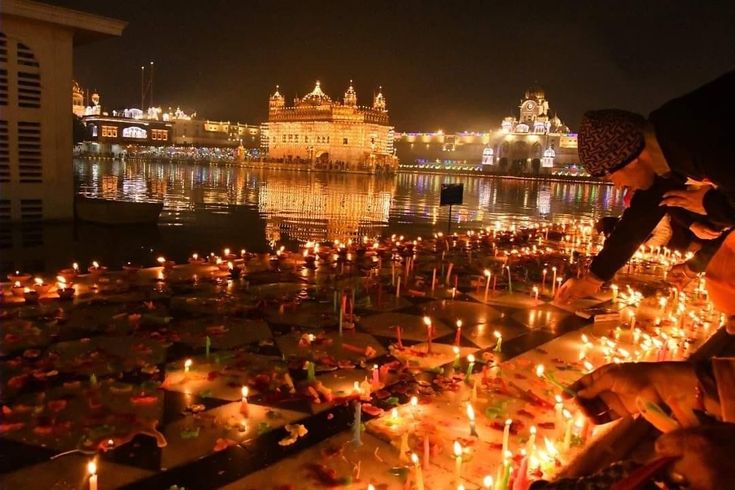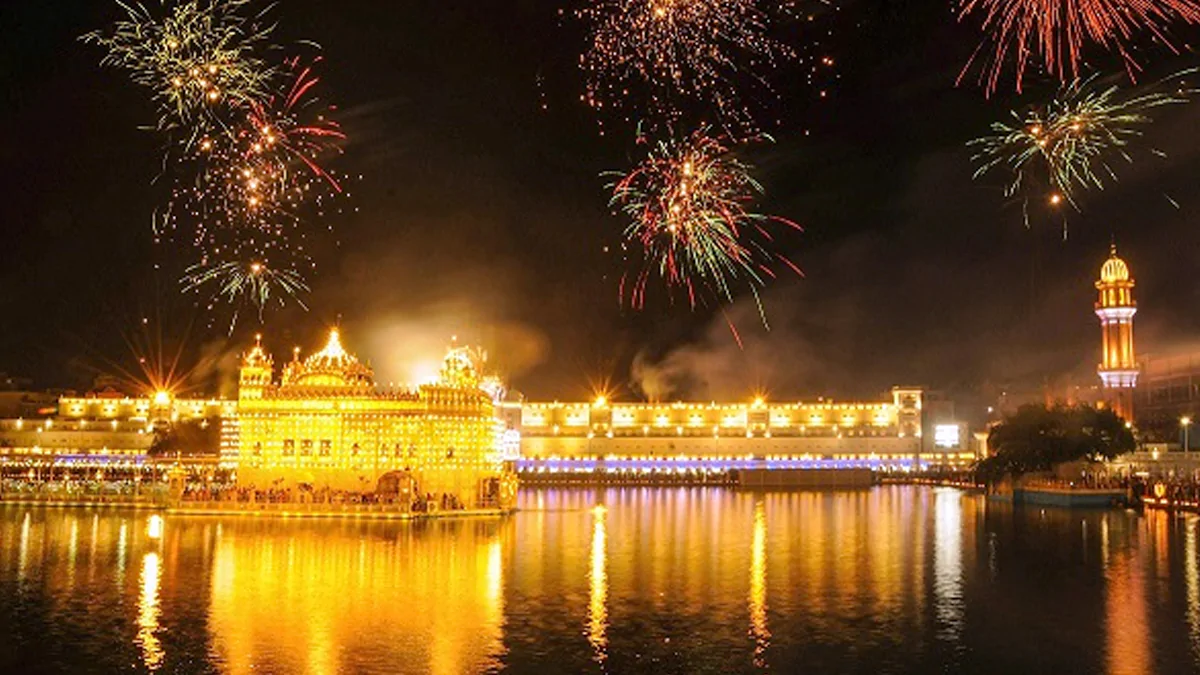Bandi Chhor Divas (Punjabi: ਬੰਦੀ ਛੋੜ ਦਿਵਸ, meaning “Day of Liberation”), also known as Bandi Chhor Dihara, is a significant Sikh festival that commemorates the release of the sixth Sikh Guru, Guru Hargobind Sahib Ji, along with 52 Hindu kings from Gwalior Fort, where they had been imprisoned by the Mughal Emperor Jahangir.
Guru Hargobind’s release was not just a personal liberation but a symbol of justice and compassion, as he ensured that the 52 captive rulers were freed with him. According to tradition, each king held onto a tassel of a specially made robe worn by the Guru, allowing all of them to leave together without resistance or battle. The site of his imprisonment is now marked by Gurdwara Data Bandi Chhor Sahib within the fort complex.
This event is celebrated in autumn, often coinciding with Diwali, the widely observed Hindu festival of lights. Since the time of Guru Amar Das Ji (the third Sikh Guru), Sikhs have congregated during such festivals, including Diwali and Vaisakhi, to be with their Guru and participate in community gatherings.
In 2003, Bandi Chhor Divas was formally recognized and incorporated into the Nanakshahi calendar by Sikh leaders and the Shiromani Gurdwara Parbandhak Committee, under the leadership of Prof. Kirpal Singh Badungar.

Celebrations
The day is marked with vibrant decorations, lighting of homes and Gurdwaras, Nagar Kirtan (religious processions), Akhand Paath (continuous recitation of Guru Granth Sahib), and Langar (community meals). A highlight is the spectacular illumination of the Sri Harmandir Sahib (Golden Temple) and its surrounding complex, along with devotional music and Kirtan performances.
It is a spiritually significant occasion, prompting Sikhs to visit Gurdwaras and spend quality time with family and community.
Historical Background
Following the martyrdom of his father, Guru Arjan Dev Ji, who was executed by Jahangir in 1606 for refusing to convert to Islam, the young Guru Hargobind Ji was appointed as the sixth Guru at just 11 years of age. At his succession ceremony, he donned two swords representing Miri and Piri—symbolizing the balance of temporal and spiritual authority.
This marked a turning point in Sikh history, as Guru Hargobind began encouraging Sikhs to embrace both spiritual devotion and military preparedness to resist oppression.
His eventual imprisonment at Gwalior Fort has multiple historical accounts. One version states that Guru Hargobind’s growing influence and military preparations raised suspicion among Mughal officials, leading to his arrest. Another theory claims he was imprisoned due to unpaid fines allegedly imposed on Guru Arjan Dev.
It is believed that Wazir Khan, a Mughal official who admired Guru Hargobind, invited him to Delhi under the pretense of a peaceful meeting with Emperor Jahangir. Upon arrival, however, the Guru was detained and sent to Gwalior Fort around 1609. Accounts differ on the duration of his imprisonment, suggesting he was released between 1611 and 1619, likely around the age of 16.
Persian sources, like Dabistan-i-Mazahib, mention that even after his release, Guru Hargobind remained under surveillance. Nevertheless, upon returning to Amritsar, he arrived during Diwali celebrations, which Sikhs began to associate with this moment of freedom and triumph—hence the origin of Bandi Chhor Divas.
Today, this festival stands as a powerful reminder of Sikh values: freedom, justice, and the courage to stand up against tyranny.

Bandi Chhor divas Darbar Sahib


Leave a Reply